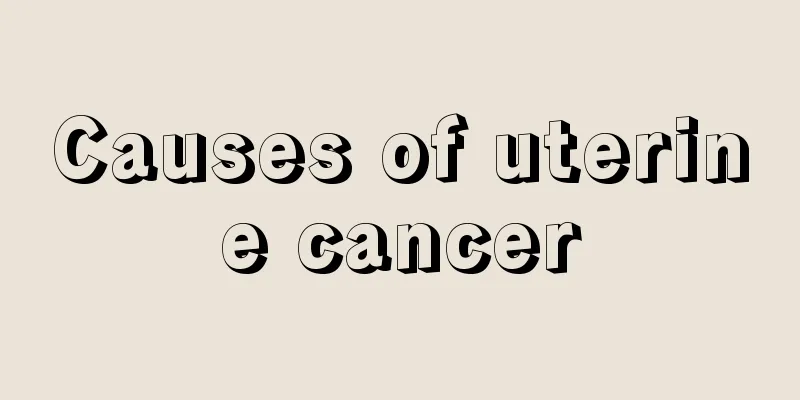The most vulnerable and fatal part of the human body

|
Some parts of the human body are very resistant to "falling", while some parts are very fragile and can easily be injured during sports or accidents, which often puts life in danger. These parts are what we often call "vital parts of the human body". Knowing where these "vital parts of the human body" are and learning how to protect them is essential health care knowledge for us. Let's take a look at the most vulnerable and fatal parts of the human body: Temple This is the weakest part of the skull. The thinnest part of the bone plate is only 1-2 mm thick, and the middle cerebral artery is located below the temple. If a person is hit violently, it is easy for blood vessels to rupture and bleed heavily, causing intracranial hematoma and causing the person to fall into a coma. Surgery should be performed promptly after the injury, otherwise it may be fatal. Common injuries: traffic accidents, beatings, falls, smashes, collisions, etc. Protective measures: When an earthquake or stampede occurs, first protect your head and neck. Cover your temple with one hand, protect the cervical vertebrae from behind with the other hand, clamp your elbows forward to protect your face, and at the same time bend your body into a "baby shape" to provide a certain cushioning effect. This is also a posture that protects the rest of the head. Which injuries are most fatal? heart As the driving force of blood supply in the human body, the heart promotes blood flow and provides sufficient blood flow to organs and tissues. If penetrating trauma or violent blow occurs, it may cause massive bleeding or cardiac arrest, and the victim will die quickly. Common injuries: car accident injuries, gunshot wounds, knife wounds, martial arts, Sanda, etc. Protective measures: When the heart is severely damaged, the victim will experience symptoms such as fainting, convulsions of the limbs, cardiac arrest, disappearance of pulse, and respiratory arrest. If the above situation occurs, call emergency number as soon as possible and start cardiopulmonary resuscitation immediately. If a sharp object pierces the body, do not pull it out. Fix the foreign object first and then bandage the wound with a clean towel, cotton pad, etc. Cervical spine This is the most vulnerable nerve center "corridor" in the human body, and once severely damaged it can be fatal. According to statistics, the mortality rate of cervical spine injury complicated with spinal cord injury can reach 15%-20%. Especially high cervical fractures can easily cause respiratory and cardiac arrest. In addition, injury to the trachea can easily cause suffocation, and injury to the carotid artery next to the Adam's apple can easily lead to death due to excessive blood loss. Common injuries: car accident injuries, knife wounds, falls, sports injuries, etc. Activities such as single and double bars, skating, skateboarding, diving, and dancing are more likely to injure the cervical spine. Protective measures: Every summer, there are frequent accidents where swimmers hit their heads against obstacles while diving, causing cervical fractures. Therefore, you must not dive into waters where you are not familiar with the depth or in waters where diving is prohibited. Back of the head Inside is the brain stem, the respiratory and cardiac center, which is responsible for maintaining important physiological functions such as heartbeat, breathing, digestion, body temperature, and sleep. It can be said to be the "life center." The skull at the back of the head is relatively weak. If it is severely injured, it can cause fatal intracranial hematoma. Common injuries: car accident injuries, beating injuries, falling injuries, smashing injuries, falling injuries, etc. Protective measures: The brain is an extremely important organ in the human body. Lack of oxygen for 4 minutes can cause brain cell death. Therefore, when going out for a walk, activities, or fun, you should try to stay away from high-rise buildings and avoid walking or staying under steep cliffs to prevent being hit by falling objects or rolling stones. The protective posture is the same as the previous one. kidney The two kidneys are located on both sides of the lumbar spine, which is what we commonly call the lower back. The kidneys are easily injured. If the trauma is severe, it can cause kidney rupture, resulting in massive bleeding, shock, or even death. Common injuries: car accident injuries, fall injuries, sports injuries, fall injuries, etc. Some elderly people may die from kidney rupture when they fall and hit their lower backs against hard objects. Protective measures: It is important for the elderly to prevent falls. The floor in your home should not be too slippery, there should be no electrical wires, and furniture should be arranged to avoid sharp corners as much as possible. The elderly should walk with small steps, and should not be too quick when standing or sitting down. They should strengthen their lower limb strength and try not to go out on rainy or snowy days. If an elderly person falls and injures his lower back, he should go to the hospital for examination in time. Limb arteries The brachial artery in the upper arm and the femoral artery in the groin are both located relatively superficially in the body. They are not only easily injured, but can also easily lead to death due to excessive bleeding. If the amount of bleeding exceeds 30% of the human body's blood volume, it can be life-threatening. Common injuries: car accident injuries, knife wounds, etc. Protective measures: If a large wound occurs, first press the pulsating point on the artery closer to the heart to quickly stop the bleeding, then quickly find a clean towel, handkerchief, gauze, etc. and press it hard on the wound. If the bleeding still does not stop, use a bandage, handkerchief, towel, etc. as a tourniquet to tighten the limb above the wound. Chen Zhi reminded that if the upper limbs are injured, the tourniquet can only be used on the upper 1/3 and lower 1/3 of the upper arm, and cannot be used to strangle the middle of the upper arm or the forearm; the tourniquet should not be used continuously for more than 1 hour, and should be loosened for 1-5 minutes every hour. |
<<: Is there a difference between the esophagus and the esophagus?
>>: There are small white spots on the tongue which are very painful
Recommend
What's wrong with the red tumor on the chest
Due to different physical constitutions, the dise...
What folk remedies can relieve cough
We all know that honey has the effect of changing...
How to create curls with a hair straightener?
The hair straightener that people often talk abou...
How is ovarian cancer caused? There are 4 factors that trigger it
Many cancers only occur in female friends. In fac...
What are the treatments for localized endometrial cancer? There are five treatments
The preferred treatment for localized endometrial...
How to use a wrist blood pressure monitor?
The wrist sphygmomanometer is a relatively new in...
Urine has lots of bubbles
If there are a lot of bubbles when you urinate, d...
What happens if you have too much stomach acid?
Excessive stomach acid is a common problem, but w...
What can I eat if I have bladder cancer
Bladder cancer patients are generally more common...
What can I eat to improve frequent urination
Urinating is a very normal behavior of the human ...
What are the complications after lung cancer brain metastasis? These symptoms need attention
When lung cancer patients have brain metastasis, ...
We should try our best to master the methods of preventing rectal cancer
Rectal cancer is one of the common tumor diseases...
What are the benefits of ivory to the human body
Elephants are large animals with a pair of very d...
How to diagnose gastric cancer? Pay attention to these points
Gastric cancer is a very serious disease and is v...
Radiotherapy and chemotherapy for cervical cancer
Do you know about some treatments for cervical ca...









